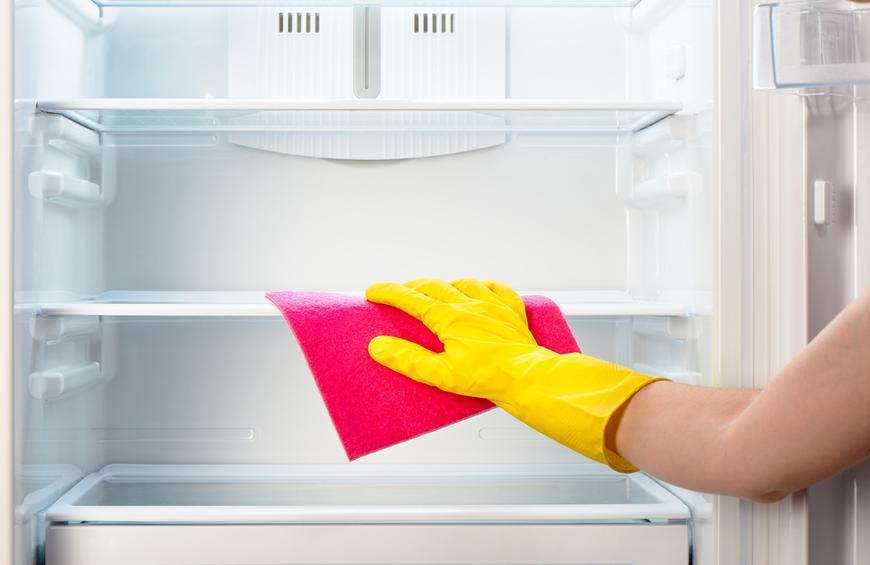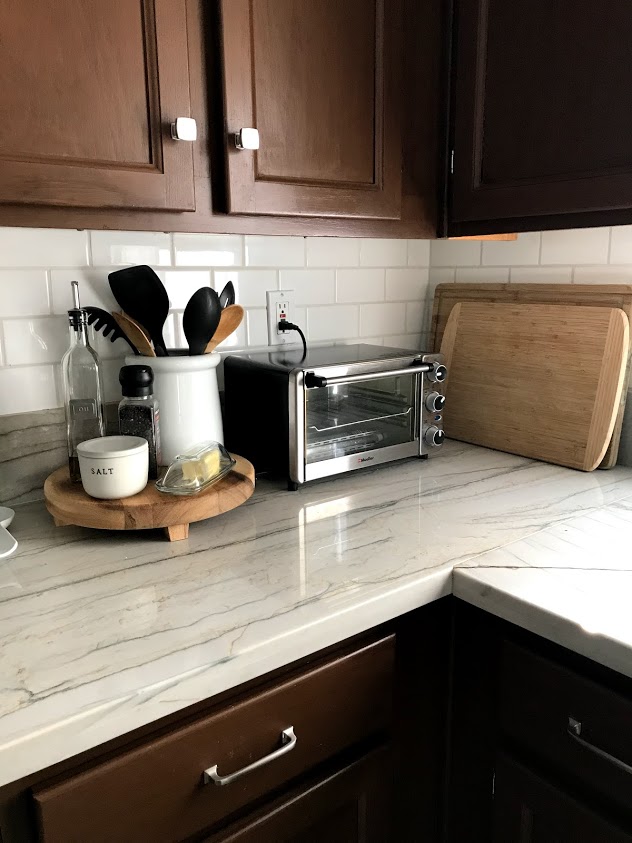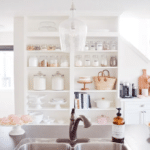| Getting your Trinity Audio player ready... |
The kitchen should be the first room unpacked after a move so you can start preparing meals to save yourself from going broke on take out. The area must be functional, well-organized, and welcoming.
Small kitchens, kitchens with limited counter space, and kitchens with limited storage areas are all places it’s harder to achieve great kitchen organization, but with vision and patience – as well as effort – even a tiny kitchen can be an organized one.
To help you here are some of my top tips as both a professional home organizer and someone who also spends quite a bit of time helping people get organized in a new home.
Clean First
If you’re moving into a new home, chances are it hasn’t been cleaned properly. Give your new kitchen a thorough cleaning before removing anything from the boxes.
Concentrate on the locations where you’ll store your dishes, cutlery, glasses, and pots. Use contact paper to create a clean, easy-to-clean surface on shelves and inside drawers if possible. Make sure your counters and sink are also clean and don’t forget the fridge!
Spend some time moving around the kitchen area if you haven’t already. Pretend you’re going about your daily routine. Cleaning supplies, pantry essentials, pots, pans, and knives are typically found where? You can get a better idea of what items should go where by walking through a few common kitchen projects.
Gather Those Boxes
If you’ve labeled each box carefully to reflect its contents, you should have a pretty good idea of what’s inside. If you’re not sure, go through each one and unwrap larger items to see what you have to sort and organize. It’s critical to do this first to ensure that you won’t have to move an item once you’ve put it in a cupboard or drawer.
Let the Unboxing Begin
Assess the cupboard and drawer space surrounding the sink and stove, as the sink and stove are the areas that are used the most. Take note of the closest and most accessible storage areas to these areas, keeping in mind that anything stored much higher than eye level will be difficult to reach.
Begin by unpacking the most important items, those that you use on a daily basis, and placing them in the accessible spaces in descending order. Cutlery, for example, will be used several times a day, so keep it in the drawer to the right of the sink (if you’re right-handed), then the dishtowels and cloths in the drawer below the towels, and perhaps your recipe books in the drawer below the towels.
Arrange Items According to Frequency of Use
The previously described sorting method also applies to cupboard space. Everyday plates, cups, glasses, and cereal bowls should be stored on shelves that are at eye level or lower. Because glasses are used more frequently than plates, they can be stored in a cupboard near the sink at eye level. Items that you don’t use as often can be stored behind more frequently used items or on a higher shelf.
Pots and pans, as well as their lids, should be kept close to the stove. You can also use the drawer beneath the stove to store larger items like baking sheets, roasting pans, and casserole dishes that aren’t used every day.
Other items that aren’t used every day should be kept in the cupboards above the refrigerator or stove. Heavy items should be kept on shelves close to the ground. You won’t have to worry about them falling because they’ll be easier to access.
Toxic substances should be kept in hard-to-reach places. If you have small children, keep all cleaning supplies in high-up, out-of-reach cupboards. Speaking of small children, make sure that some items, such as plastic cups and plates, are easily accessible while more delicate items are out of the reach of little hands
Organize Items That Aren’t Used Often
Dishes, china, and other special occasion items can be kept in a china cabinet, buffet table, or in more difficult-to-reach cupboards. Very tall cabinets in some kitchens provide storage that can only be reached with a stepstool. Keeping fragile items in an out-of-the-way location will keep them safe.
Get Your Pantry Organized
Cans and dry food stock should be kept separate from your dishes, pots, and pans in a pantry closet or similar area. Spices should be kept near the stove but not right next to it as the heat will ruin the flavors.
Spices can be stored in drawers; labeling the tops of jars allows you to quickly scan for the spice you need. Spice carts that sit on the counter or racks that hang over the stove are other options that work just as well. Just keep in mind that spices must be stored in a dry, cool environment to stay fresh.
Reorganize As You Go
After a few weeks in your new home, you’ll most likely develop a cooking, serving, and eating routine. Once you’ve gotten used to the routine, double-check that your first round of kitchen organization went smoothly. Are you able to get to everything you need? Are your kitchen gadgets overflowing because you didn’t choose a large enough space for them, or you simply have too many? Reorganize your kitchen as needed to ensure that it is functional for you and your family.
As I mentioned, I am often called in to help people unpack and organize in their new home, and I’ll be happy to do so for you. I’m also happy to come in and organize a long-established kitchen that has gotten a little out of control in the kitchen organization department.
If you need kitchen organization help – or help with organizing any other aspect of your home, office or life, why not contact us here so that we can chat about your needs and how Just Organized by Taya can help.
- Top 10 Tips for Linen Closet Organization - October 16, 2025
- The “House Purse”: The Viral Trend That Proves Organization is Self-Care - October 14, 2025
- A Mental Health Month Guide to Decluttering Your Life (And Your Home) - October 9, 2025









